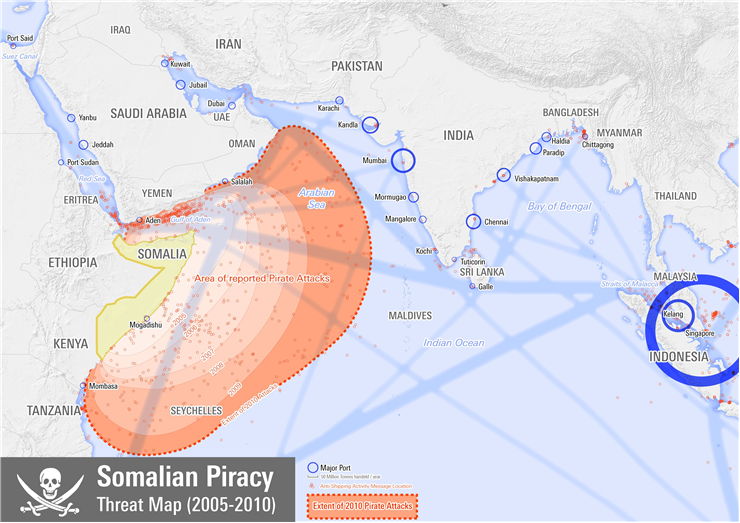Somali Pirates
The Modern Age Pirates
Although the tales of Golden Age of Piracy are still fresh in our minds, full of swashbuckling captains, treasure ships and fierce naval battles, the modern age still has one area of the world where pirates rule the sea – Somalia. After the collapse of their government in 1991, fierce civil war, and the birth of the inefficient new government, the country of Somalia became birthplace of the new age of piracy. Set on a strategic point on the Horn of Africa, Somalian-fisherman and ex-militia begun to raid the shipping lanes in the narrow sea channel known as The Gulf of Aden. These attacks created massive economic impact, and international military fleets patrol these waters daily.
The first organized pirate attack carried on by Somali pirates started shortly after the start of the second phase of the Somali Civil War in 2005. Although exact cause of those attack are not known (some claim that fisherman wanted to protect their waters from foreign ships, or that foreign toxic dumps created massive loss of sea life which forced fishermen to violence), as time went on more and more pirates started attacking shipping lanes traveling from Suez to India, and vice versa. As the international warships became more and more present, so did Somalia pirates started using more and more advanced techniques (as of now, they use naval mother ships that allow them to organize large scale attacks on a distant targets on open sea). The lack of strong government, poverty and ever present crime created situation where pirates started to work for local crime lords, under the guise of serving as coast guards. Successful pirates live much better than the remainder of the country, which fuels the constant arrival of new pirates hungry for glory and wealth. According to some pools, over 70 percent of local Somali population supports their pirate fleet as one of the main protectors of the nation fishing grounds.
In 2008, pressure from international commerce gave birth to the organized military defense of trade routes. The first warship that entered the waters of Gulf of Aden came from India, which was soon joined by Russian forces. The current military effort is organized into “Combined Task Force 150” which guards waters around Somalia and enforces new multiyear defense plan that includes better protection of trade ships and preventive attacks on the pirate coastal strongholds. The immediate effect of international warship was clearly visible – pirates soon gave up on the local attacks near Somali coast and focused their efforts on the wider Indian Ocean, and the horrifying kidnaping of Kenya’s tourist from their beaches.
The main goal of pirates remained same throughout all these years remained same – ransom. Just in the 2010, over 1100 hostages were captured by Somali pirates, and by the fall of 2011 they captured another 300. Also, they collected various amounts of ransom for captured ships – ranging from 500.000 to 2 million dollars. Even though pirates try to keep their captives alive in the hope of receiving ransom, over 60 seafarers have died in their prisons.
International governments are still trying to come to the solution to this serious problem, and first step must be creation of the stable Somali government.

